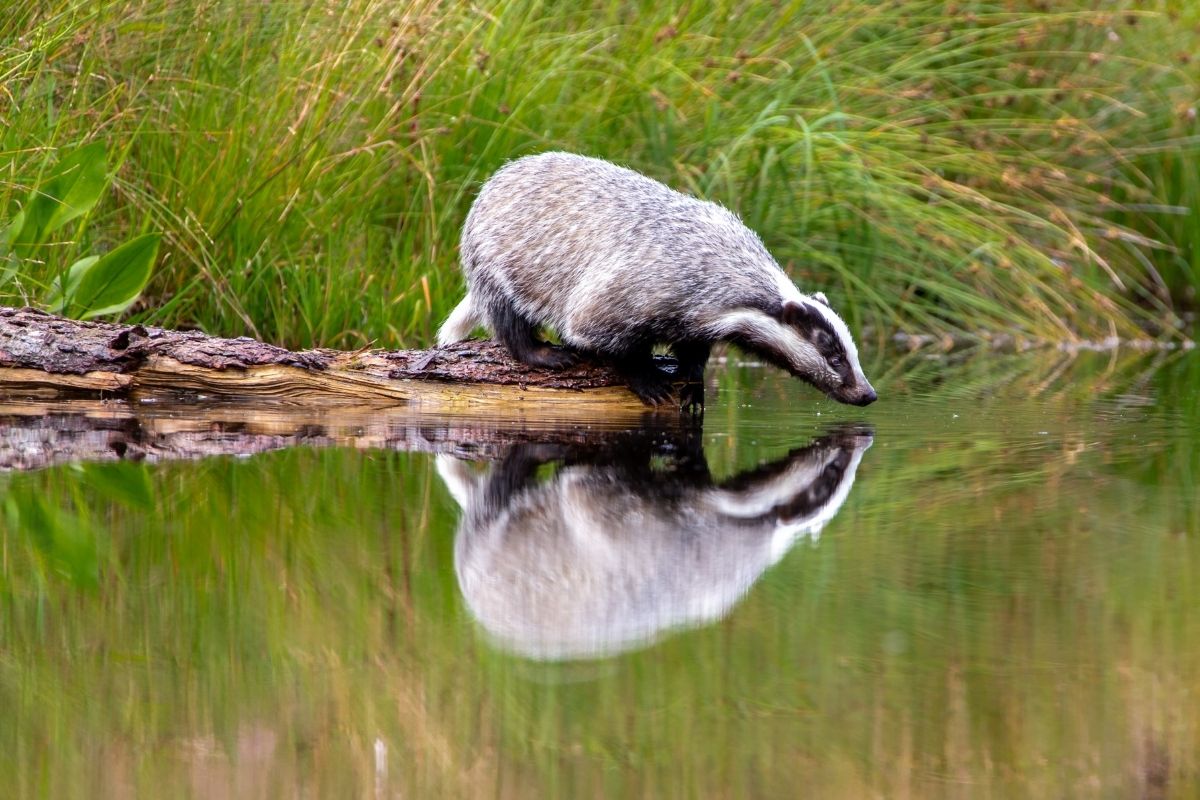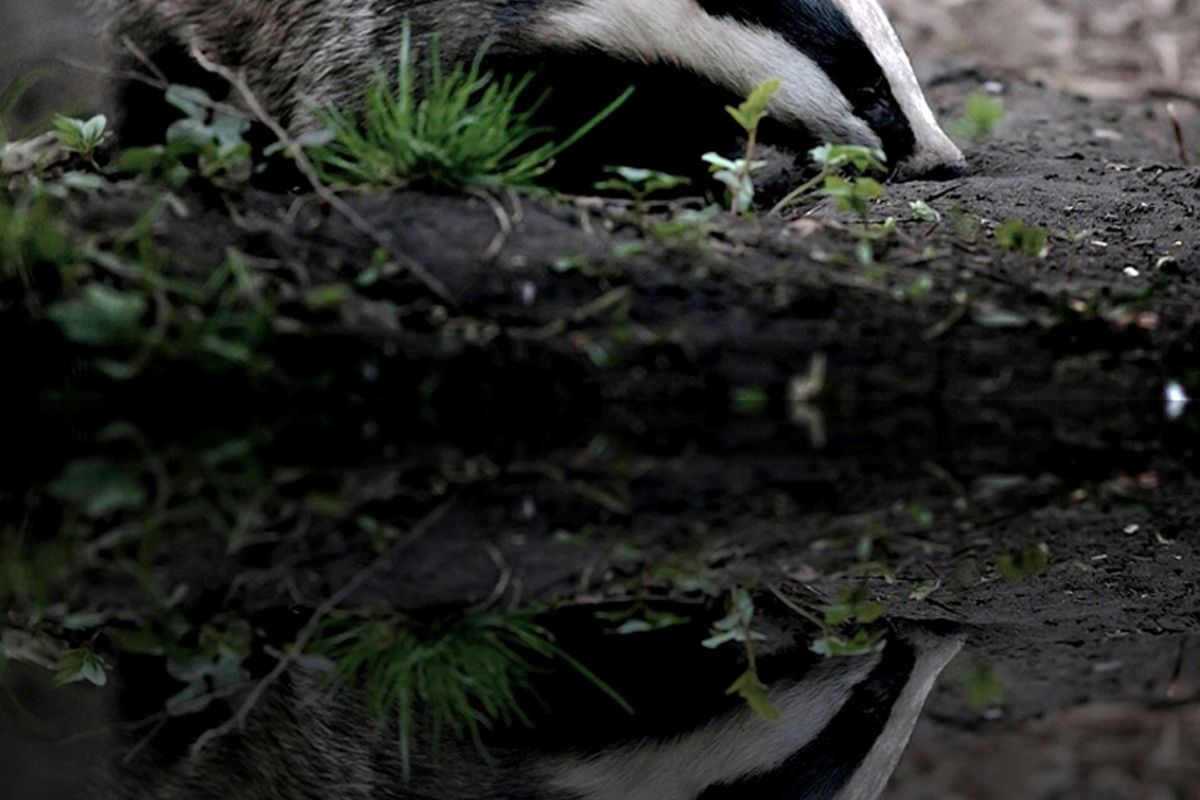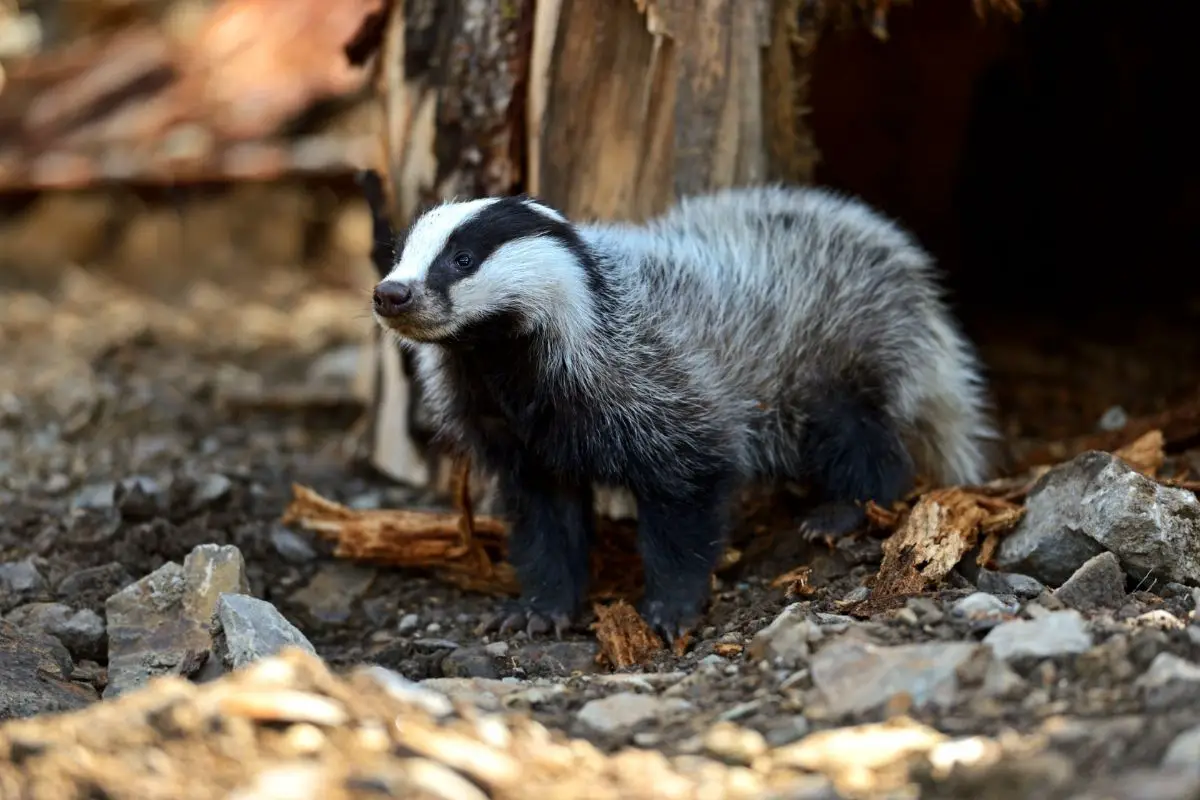
Yes, honey badgers can swim and they do so pretty well. These animals are well-rounded, meaning they are agile on land, in trees, and the water. Maybe this is among the reasons they’re so fearless, as they can outswim predators and swim after their prey.
Honey badgers are amazing to both watch and read about. Their agility is of the highest level, driving fear sometimes and annoyance into large predators, including the king of the jungle, the lion. Let’s look into the lives of these amazing animals and see how swimming fits into their daily life, despite their usually dry habitats.
Can Honey Badgers Swim?
As mentioned earlier, not only can honey badgers swim, but they’re good at swimming. When it comes to swimming, with only a handful of exceptions, most mammals can. Honey badgers, on the other hand, are among the greatest at swimming.
They can swim because they are weasels. However, the honey badgers, on the other hand, appear to swim solely as a matter of need, and not regularly for fun. It’s also important to remember that the moist worms that badgers consume provide much of the liquid they need to survive, so they don’t need much water to drink except in hot, dry summers or frigid winters.
When do Honey Badgers Swim?
It is not uncommon for badgers to be capable swimmers like other animals, although this is not something they actively want to do. Badgers will make use of bridges and fallen trees across water bodies when available to avoid swimming.

When a tree falls across a stream, badgers utilize it as a place to rest their paws for a long period, until the bark wears away and the surface gets too smooth. However, there have been accounts of badgers crossing a canal to get to a special location for good foraging. A badger may or may not be able to swim depending on the situation.
What are Honey Badgers?

Honey Badgers belong to the weasel family, so yes, they are relatives of otters, ferrets, the skunk, and more. Despite their name, they prefer the bee larvae, which are often seen in honeycombs as their main diet. Like its relatives (the skunk), it does have a duct at the base of its tail that emits a foul-smelling scent, just like its kin. They can dig tunnels up to nine feet in length and five feet underground.
Honey badgers use their claws to defend themselves as well as to build burrows for themselves. Honey Badgers will adopt other species’ tunnels to suit their purposes. This implies they are active at night and sleep during the day, just like owls.
A native of Africa and Asia, Honey Badgers enjoy dry, forested, and grassy habitats. Various creatures can, however, swim and scale trees. They tend to be lonely creatures who prefer to forage on their own.
Despite their charming appearance, honey badgers are ferocious and aggressive animals, with large heads, powerful teeth, and a pungent odor.
Their fangs are strong enough to puncture a tortoiseshell, but more significantly, they are capable of doing severe harm to a human being. Unlike humans, polar bears typically give birth to one cub at a time, but occasionally two. Cubs, like bears, only spend a maximum of two years with their mothers.
As long as they are kept in captivity, Honey Badgers can exist for up to twenty-six years.
These monsters may weigh up to 30 pounds and measure more than three feet long, which surprised me because I imagined them to have been considerably smaller. They are not near-extinct, and they do face risks. Beekeepers execute revenge attacks for hive disruption, smugglers kill these creatures, and other predators pose risks as well.
Because they are primarily solitary, it’s fascinating to learn that an animal so short and stocky can be as vicious as this one. As the stat sheet implies, they are bold. It isn’t uncommon for them to pilfer from other animals or scrounge the remains of larger creatures, although they forage for their meals most days.
Their stocky size, long foreclaws, and conspicuous, sharp teeth make them excellent mutilators.
Honey Badger Habitat and Range

Honey badgers can be found in Africa, Saudi Arabia, Iran, and western Asia. With their ability to thrive in a range of climates and habitats, they are a great choice for any wildlife enthusiast. Depending on the species, their home ranges can be up to 193 sq mi (500 square kilometers).
Most honey badgers are busy during the day, but they will still prefer to hide out in the darkness around human areas. Even though they’re usually spotted alone, it’s not unusual to come across a pair of them mating. It’s common for honey badgers to mate throughout the year and produce only one cub at a time.
Skilled at converting rock nooks along with hollow trees into dwellings, honey badgers will even construct homes in the discarded burrows of other wildlife, including porcupines and yellow mongooses.
Threats to Honey Badgers
It is not uncommon for honey badgers to be killed by farmers or beekeepers, even though they are widely distributed and regarded to be abundant. Honey badgers are prized for their bravery and tenacity in traditional medicine, as well as for their use in bushmeat and conventional medicine. Curbing the loss of honey badgers from certain places demands monitoring from residents.
Modification of the Honey Badger
A big deal about whatever renders the honey badger a peculiar and successful predator is its visual traits. There are few, if any, Mustelidae that have so many of the honey badger’s characteristics. It’s tougher, nastier, and more dangerous than other badgers.
Honey badgers are one of the most successful and reliable carnivores in the Kalahari because of their unusual form, which is partly attributable to the setting where the Mellivora capensis lives. Compared to other members of the Mustelidae family, the honey badger’s body is noticeably longer. Indeed, it is the biggest mustelid Kalahari desert as well as the biggest mustelid on land in Africa.
It has a big and lengthy body, plus a broad back. To protect itself from injury, its ears are tucked behind the back of its head. The combination of dense yet loose skin makes it a formidable predator that is tough to hurt.
Honey Badgers Skin Advantage

There are numerous advantages to honey badgers with this skin type. The honey badger’s loose skin makes it difficult to capture, and this makes it vulnerable to attacks from predators. The badger’s broader neck skin helps it defend itself against other badgers within the same family.
Honey badgers get their name from their fondness for the beeswax, as you may recall from previous parts of our website. However, contrary to popular belief, the honey badger’s name stems from its preference for bee larva over honey. To get their hands on some larva, honey badgers simply poke their heads inside the hive and start munching.
As a result of the honey badger’s tough skin, they’ll receive only a few stings to obtain a feast of honey. One of the honey badger’s distinctive features is its ability to scavenge nectar. They also have an anal pouch, which they can use to defend themselves or to mark their territory with scent.
The badger releases a smell while searching through a hive to help quiet the agitated bees.
